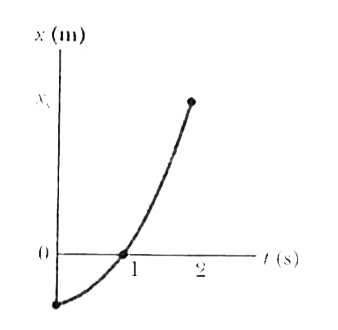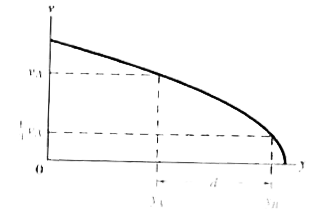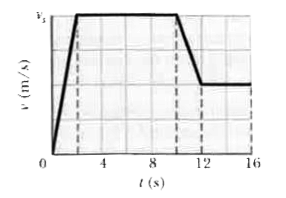PROBLEMS from RESNICK AND HALLIDAY PHYSICS (HINGLISH) MOTION ALONG A STRAIGHT LINE for Class 12
| Class 12 | PHYSICS |
| Chapter | MOTION ALONG A STRAIGHT LINE |
| RESNICK AND HALLIDAY PHYSICS (HINGLISH) | PROBLEMS |
| Medium | English |
| Academic Year | 2023-2024 |
Question 2
Compute your average velocity in the following two cases, (a) You walk 73.2 m at a speed of 1.22 m/s and then run 73.2 m at a speed of 2.85m/s along a straight track. (b) you walk for 1.00 min at a speed of 1.22 m/s and then run for 1.00 min at 3.05 m/s along a straight track. (c) Graph x versus t for both cases and indicate how the average velocity is found on the graph.View SolutionQuestion 3
Rachel walks on a straight road from her home to a gymnasium 2.80 km away with a speed of 6.00 km/h. As soon as she reaches the gymnasium, she immediately turns and walks back home with a speed of 7.70 km/h as she finds the gymnasium closed. What are the (a) magnitude of average velocity and (b) average speed of Rechel over the interval of time 0.00-35.0 min ?View SolutionQuestion 5
The position of object moving along an x-axis is given by x=3t−4t2+t3, where x is in meters and t in seconds. Find the position of the object at the following values of t : (i) 2s, (ii) 4s, (iii) What is the object's displacement between t = 0 s and t = 4 s ? and (iv) What is its average vvelocity for the time interval from t = 2 s to t = 4 ? View SolutionQuestion 6
A pigeon flies at 36 km/h to and for between two cars moving toward each other on a straight road, starting from the first car when the car separation is 40 km. The first car has speed of 16 km/h and the second one has a speed of 25 km/h. By the time the cars meet head on, what are the (a) total distance and (b) net displacement flown by the pigeon ? View SolutionQuestion 7
Panic escape . Figure 2-16 shows a general situation in which a stream of people attempt to escape through an exit door that turns out to be locked. The people move toward the door at speed vs=3.50m/s, are each d=0.25m in depth, and are separated by L=1.75m. The arrangement in Fig. 2-16 occurs at time t=0. (a) At what average rate does the layer of people at the door increase ? (b) At what time does the layer's depth reach 5.0m ? (The answers reveal how quickly such a situation becomes dangerous. )
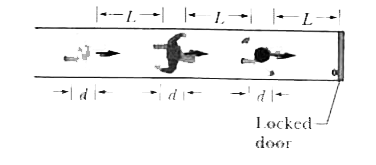 View Solution
View SolutionQuestion 8
To set a speed record in a measured ( straight-line) distance d, a race car must be driven first in one direction ( in time t1) and then in the opposite direction ( in time t2 ). (a) To eliminate the effects of the wind and obtain the car's speed vc in a windless situation, should we find the average of d/t1 and d/t2 ( method 1) or should we find divide d by the average of t1 and t2 ? (b) What is the fractional difference in the two methods when a steady wind blows along the car's route and the ratio of the wind speed vw to the car's speed vc is 0.0240 ? View SolutionQuestion 9
A pickup vehicle is moving with a speed of 15.00 m/s on a straight road. A scooterist wishes to overtake the pickup vehicle in 150.0s. If the pickup vehicle is at an initial distance of 1.500 km from the scooterist, with what constant speed should the scooterist chase the pickup vehicle ? View SolutionQuestion 10
Traffic shock wave. An abrupt shlowdown in concentrated traffic can travel as a pulse, termed a shock wave, along the line of cars, either downstream ( in the traffic direction) or upstream, or it can be stationary. Figure 2-17 shows a uniformly spaced line of cars moving at speed v=25.0 m/s toward a uniformly spaced line of slow cars moving at speed vs=5.00 m/s. Assume that each faster car adds length L=12.0 m (car length plus buffer zone ) to the line of slow cars when it joins the line, and assume it slows abruptly at the last instant. (a) For what separation distance d between the faster cars does the shock wave remain stationary ? It the separation is twice that amount, what are the (b) speed and (c) direction ( upstream or downstream ) of the shock wave ?
 View Solution
View SolutionQuestion 12
The position function x(t) of a particle moving along an x axis is x=4.0−6.0t2, where x in meters and t in seconds. (a) At what time and (b) where does the particle ( momentarily) stop ? At what (c) negative time and (d) positive time does the particle pass through the origin ?View SolutionQuestion 13
The position of a particle moving along an x axis is given by x=12t2−2t3, where x is in meters and t is in seconds. Determine (a) the position, (b) the velocity, and (c) the acceleration of the particle at t=3.5s. (d) What is the maximum positive coordinate reached by the particle and (e) at what time is it reached ? (f) What is the maximum positive velocity reached by the particle and (g) at what time is it reached ? (h) What is the acceleration of the particle at the instant the particle is not moving ( other than at t=0 ) ? (i) Determine the average velocity of the particle between t=0 and t=3s .View SolutionQuestion 15
(a) If the position of a particle is given by x=25t−6.0t3, where x is in meters and t is in seconds, when, if ever, is the particle's velocity v zero ? (b) When is its acceleration a zero ? For what time range ( positive or negative ) is a (c) negative and (d) positive ? (e) Graph x(t),v(t), and a(t).View SolutionQuestion 21
On a dry road, a car with good tires may be able to brake with a constant deceleration of 4.92m/s2. (a) How long does such a car, initially traveling at 27.2 m/s, take to stop ? (b) How far does it travel in this time ? (c) Graph x versus t and v versus t for the deceleration .View SolutionQuestion 22
A certain elevator cab has a total run of 190 m and a maximum speed of 305 m/min, and it accelerates from rest and then back to rest at 1.22m/s2. (a) How far does the cab move while accelerating to full speed from rest ? (b) How long does it take to make the nonstop 190 m run, starting and ending at rest ? View SolutionQuestion 23
The brakes on your car can slow you at a rate of 5.2m/s2. (a) If you are going 146 km/h and suddenly see a state trooper, what is the minimum time in which you can get your car under the 90 km/h speed limit ? (The answer reveals the futility of braking to keep your high speed from being detected with a radar or loser gun. ) (b) Graph x versus t and v versus t for such a slowing .View SolutionQuestion 25
A world's land speed record was set by Colonel John P. Stapp when in March 1954 he rode a rocket-propelled sled that moved along a track at 1020 km/h. He and the sled were brought to a stop in 1.4s. ( See Fig. 2-7.) In terms of g, what acceleration did he experience while stopping ?View SolutionQuestion 27
In Fig. 2-18, a red car and a green car, identical except for the color, move toward each other in adjacent lanes and parallel to an x axis. At time t=0, the red car is at xr=0 and the green car is at xk=220m. If the red car has a constant velocity of 20 km/h, the cars pass each other at x=44.5 m, and if it has a has a constant velocity of 40 km/h, they pass each other at x=77.9m. What are (a) the initial velocity and (b) the constant acceleration of the green car ?
 View Solution
View SolutionQuestion 29
A car moves along an x axis through a distance of 900 m, starting at rest ( at x=0) and ending at rest ( at x=900m). Through the first 14 of that distance, its acceleration is +2.75m/s2. Through the rest of that distance, its acceleration is −0.750m/s2. What are (a) its travel time through the 900 m and (b) its maximum speed ? (c) Graph position x, velocity v, and acceleration a versus time t for the trip.View SolutionQuestion 31
A car moving at a constant velocity of 46 m/s passes a traffic cop who is readily sitting on his motorcycle. After a reaction time of 1.0s, the cop begins to chase the spoeding car with a constant acceleration of 4.0 m/s2. How much time does the cop then need to overtake the speeding car ?View SolutionQuestion 32
You are driving toward a traffic signal when it turns yellow. Your speed is the legal speed limit of v0=55km/h, your best deceleration rate has the magnitude a=5.18m/s2. Your best reaction time to begin braking is T=0.75s. To avoid having the front of your car enter the intersection after the light turns red, should you brake to a stop or continue to move at 55 km/h if the distance to the intersection and the duration of the yellow light are (a) 40 m and 2.8 s, and (b) 32 m and 1.8 s ? Give an answer of brake, continue, either ( if either strategy works ), or neither ( if neither strategy works and the yellow duration is inappropriate ) .View SolutionQuestion 33
On a defense aircraft carrier, a military jet lands at a speed of 64 m/s. (a) Assuming the acceleration to be constant, what is the acceleration of the jet if it stops in 3.0 s due to the arresting cable that snags it ? (b) If the jet first touches at position xi=0, what is its final position along an x axis lying under its landing path ? View SolutionQuestion 34
You are arguing over a cell phone while trailing an unmarked police car by 25 m, both your car and the police car are traveling at 120 km/hr. Your argument diverts your attention from the police car for 2.0 s ( long enough for you to look at the phone and yell, " I won't do that ! " ). At the beginning of that 2.0 s, the police officer begins braking suddenly at 5.0m/s2. (a) What is the separation between the two cars when your attention finally returns ? Suppose that you take another 0.40 s to realize your danger and uegin braking . (b) If you too brake at 5.0m/s2, what is your speed when you hit the police car ? View SolutionQuestion 35
When a high-speed passenger train traveling at 161 km/h rounds a bend, the engineer is shocked to see that a locomotive has improperly entered onto the track from a siding and is a distance D=676 m ahead ( Fig. 2-20). The locomotive is moving at 29.0 km/h. The engineer of the high-speed train immediately applies the brakes . (a) What must be the magnitude of the resulting constant deceleration if a collision is to be just avoided ? (b) Assume that the engineer is at x=0 when , at t=0, he first spots the locomotive. Sketch x(t) curves for the locomotive and high-speed train for the cases in which a collision is just avoided and is not quite avoided.
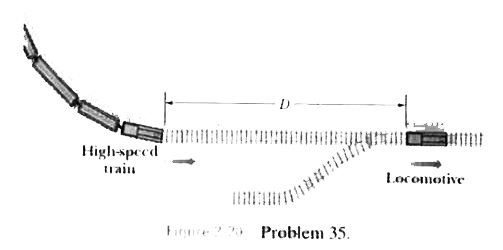 View Solution
View SolutionQuestion 42
A stone is dropped into a river from a bridge 53.6 m above the water. Another stone is thrown vertically down 1.00 s after the first is dropped. The stones strike the water at the same time. (a) What is the initial speed of the second stone ? (b) Plot velocity versus time on a graph for each stone, taking zero time as the instant the first stone is released .View SolutionQuestion 45
Water drips from the nozzle of a shower onto the floor 200 cm below. The drops fall at regular ( equal) intervals of time, the first drop striking the floor at the instant the fourth drop begins to fall. When the first drop strikes the floor, how far below the nozzle are the (a) second and (b) third drops ? View SolutionQuestion 49
In a forward punch in karate, the fist begins at rest at the waist and is brought rapidly forward until the arm is fully extended. The speed v (t) of the fist is given in Fig. 2-22 for someone skilled in karate. The vertical scaling is set by vs=8.0m/s. How far has the fist moved at (a) time t=50 ms and (b) when the speed of the fist is maximum ?
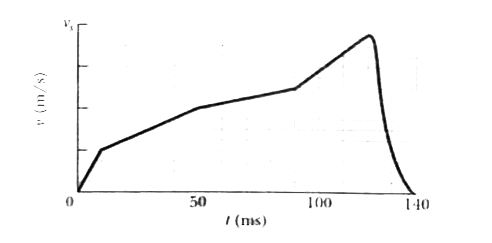 View Solution
View SolutionQuestion 50
When a soccer ball is kicked toward a player and the player defiects the ball by " iteading" it, the acceleration of the head during the collision can be significant. Figure 2-23 gives the measured acceleration a(t) of a soccer player's head for a bare head and a helmeted head, starting from rest. the scaling on the vertical axis is set by as=200m/s2. At time t=7.0 ms, what is the difference in the speed acquired by the bare head and the speed acquired by the helmeted head ?
 View Solution
View SolutionQuestion 51
A salamander of the genus Hydromantes captures prey by launching its tongue as a projectile: The skeletal part of the tongue is shot forward, unfolding the rest of the tongue, until the outer portion lands on the prey, sticking to it. Figure 2-24 shows the acceleration magnitude a versus time t for the acceleration phase of the launch in a typical situation. The indicated accelerations are a2=400m/s2 and a1=100m/s2. What is the outward speed of the tongue at the end of the acceleration phase ?
 View Solution
View SolutionQuestion 53
Two particles move along an x axis. The position of particle 1 is given by x=6.00t2+3.00t+2.00 ( in meters and seconds ) , the acceleration of particle 2 is given by a=−8.00t ( in meters per second squared and seconds ) and , at t=0, its velocity is . 15 m/s . When the velocities of the particles match, what is their velocity ? View Solution
All Exercises from RESNICK AND HALLIDAY PHYSICS (HINGLISH) Class 12 PHYSICS MOTION ALONG A STRAIGHT LINE
- CHECKPOINTS
- PROBLEMS
- PRACTICE QUESTIONS ( INTEGER TYPE )
- PRACTICE QUESTIONS ( LINKED COMPREHENSION )
- PRACTICE QUESTIONS ( MATRIX-MATCH)
- PRACTICE QUESTIONS ( MORE THAN ONE CORRECT CHOICE TYPE )
- PRACTICE QUESTIONS ( SINGLE CORRECT CHOICE TYPE)
- SAMPLE PROBLEM 2.01
- SAMPLE PROBLEM 2.02
- SAMPLE PROBLEM 2.03
- SAMPLE PROBLEM 2.04
- SAMPLE PROBLEM 2.05
- SAMPLE PROBLEM 2.06
- SAMPLE PROBLEM 2.07
- SAMPLE PROBLEM 2.08
- SAMPLE PROBLEM 2.09
- SAMPLE PROBLEM 2.10

